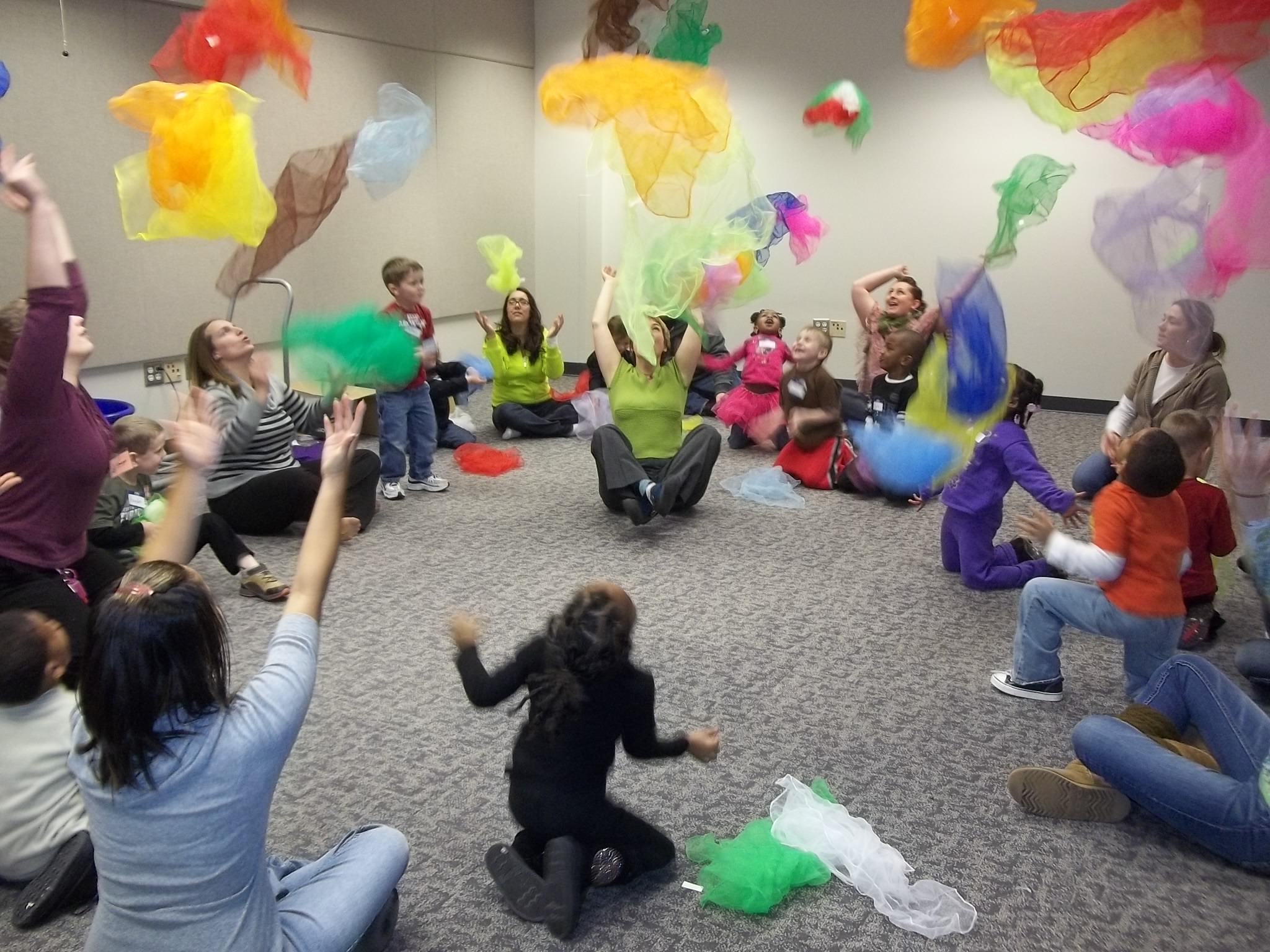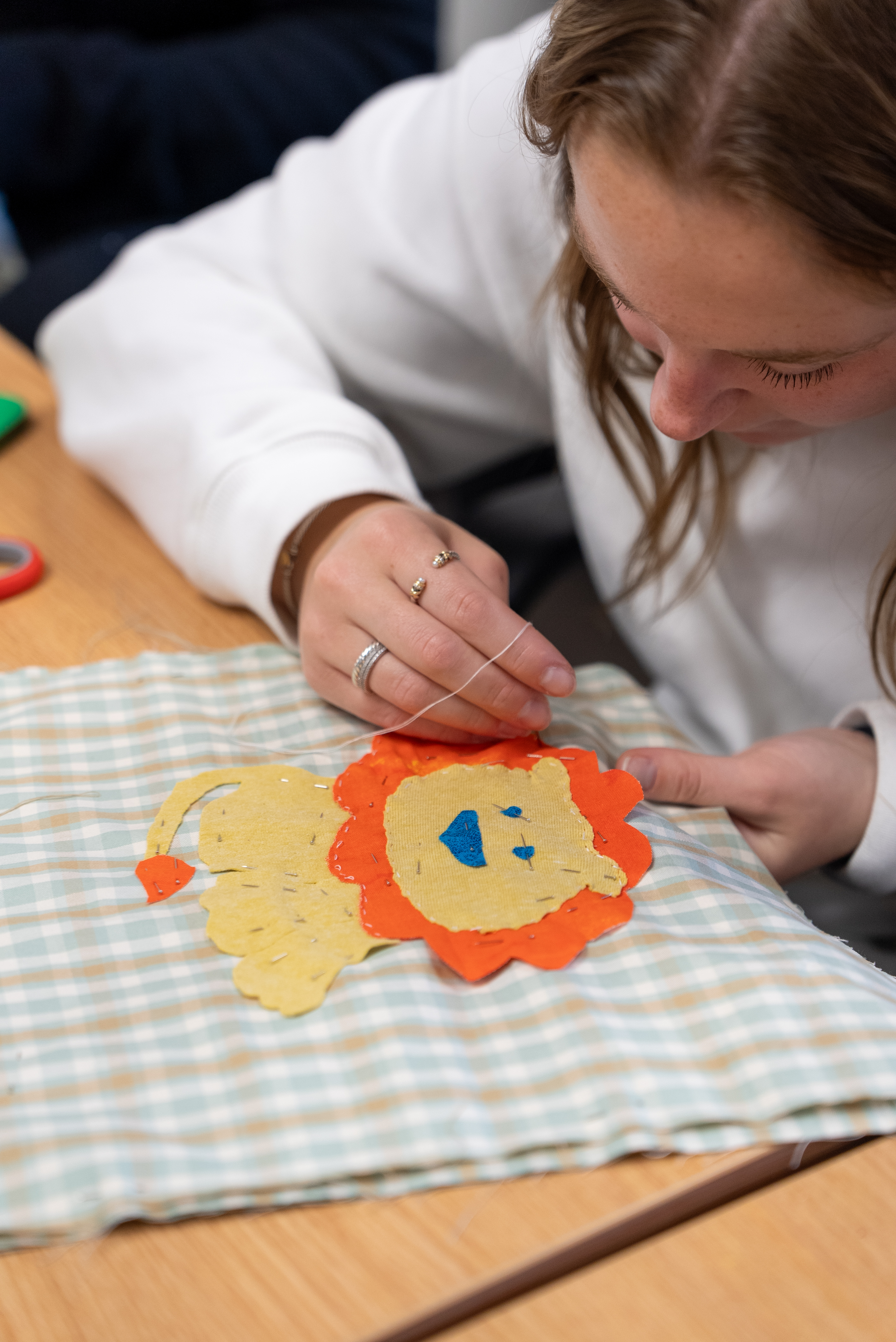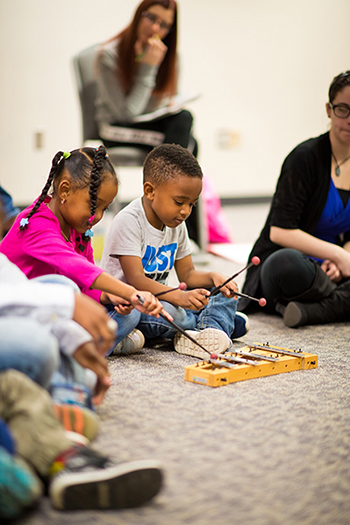Walk into a classroom infused with music, movement and visual storytelling, and you’ll find something remarkable: students leaning in, asking questions, connecting ideas—and most importantly, lighting up with curiosity.
It’s a vivid contrast to a growing concern in K-12 education across the country. According to a 2023 Gradient Learning report, 80% of teachers are concerned about their students’ engagement in the classroom, and 95% believe that incorporating strategies to sustain and increase engagement should be a priority.
The arts hold the answer.

Here is a more hopeful figure: One academic study reported that when teachers brought the arts into their lessons, student engagement rose by 25%.
At Michigan State, educators and researchers are championing a commitment to weaving arts into all areas of education to help both teachers and students thrive in the classroom.
Rather than treating the arts as an add-on, MSU is helping synergize creative expression with other subjects like math, science, social studies and world languages. It’s not just about learning differently, it’s about bringing curiosity and joy into each lesson. Through arts integration, students actively develop their understanding of both the art and the subject to better meet their educational objectives.
An inherently interdisciplinary medium, the arts are a powerful way to support whole-child learning, recognized by the Michigan Department of Education as a necessary approach in schools. This process creates multifaceted learners that exist across interwoven environments—at home, in school and around their communities—who are better prepared for the world beyond the classroom.
At a time when arts funding is being cut across the nation, MSU is expanding access and advocating for scientifically proven methods that benefit learners and fulfill educators. Through various efforts, arts integration is becoming more and more a part of Michigan classrooms.
Exploring limitless potential in campus classrooms
Dr. Karenanna Boyle Creps, a 2020 MSU College of Education alum, is an assistant professor in the Department of Teacher Education focused on arts education. She teaches the next generation of K–12 educators about the limitless potential of interdisciplinary arts education through hands-on learning and collaboration with on-campus education professionals. That means her students can directly experience the impact of arts-infused education for themselves—and emerge with the tools and knowledge to bring it into their future classrooms.

“Most students don’t know what to expect when they walk in the door,” said Creps. “From day one, we are engaging in theatre, music, dance and visual arts activities that grow and shift every semester. I love witnessing their learning take shape with and through the arts.”
Quoting the philosopher and educational reformist John Dewey, Creps notes that reading and writing about the arts will only take you so far.
“To ‘know’ an art form, you must encounter it on its own terms. Get elbows-deep in clay, sing in a choir, participate in an open mic night, go to a salsa club and dance until you lose inhibition,” she said.
Over the past six years, more than 700 preservice teachers at MSU have taken an arts integration course. It’s a promising number that helps ensure greater access to arts learning for generations to come.
Making a generational difference
While investing in the future, MSU is also working with Michigan educators to bring arts integration strategies into the classroom today. Look no further than the Eli and Edythe Broad Art Museum’s annual teacher fellowship program as an example.
Thousands of U.S. K-12 classes visit museums annually for one-time engagements. But what happens when a museum also teaches the teachers how to use art in lessons throughout the year?
The MSU Broad Art Museum, in partnership with MSU’s African Studies Center, Asian Studies Center, the Center for Latin America and Caribbean Studies and LATTICE—Linking All Types of Teachers to International Cross-Cultural Education—is doing just that with a yearly K-12 teacher fellowship for educators of all subjects.
This innovative program not only helps educators meet learning objectives in both their primary subject and the visual arts, it also embarks on the additional goal of deepening students’ understanding of global cultures across history by using the museum’s collection as a resource.
The focus on fostering a stronger understanding of world cultures through the lens of art is one that is particularly resonant with Dominic Hateka, doctoral student in the College of Education. Along with Creps, he has taught undergraduates in the Department of Teacher Education about arts integration. He has also served as a peer leader in the teacher fellowship program at the MSU Broad Art Museum for the past two years.

During his time at the museum, Hateka directly encountered objects from Ghana, where he grew up. Seeing his own culture on view as a part of their permanent collection sparked a personal connection, and an important lesson that guides his teaching today.
“Now, what I explore is how to leverage the emotional attachment people have to things to help develop curriculum that propels lifelong learning and curiosity,” he said. “How do we use these art pieces to speak to the real issues we have in society? To speak to the diverse communities we have in our classrooms?”
Like the hands-on methods used by Hateka and Creps, the MSU Broad Art Museum invites educators to experience the same engagement strategies they will bring to their home schools.
Meghan Collins leads and facilitates the teacher fellowship program. In 2024, she was awarded Museum Educator of the Year by the Michigan Art Education Association.

“A lot of [our fellows] said they expected to come in and learn something about an artwork that they could go repeat,” said Collins. “Instead, I’m inviting them to think critically, think deeply about what it means to look at something made by another person, and how to facilitate something like that with their students.”
The fellows come from districts across the state and teach subjects, ranging from math to music, to all grade levels. One of this year’s fellows was Karen Holman-Cervera, a Spanish teacher at mid-Michigan’s Holt High School.
“Through this program, I’ve seen teachers of all disciplines be able to connect their students with global issues and cultures,” observed Holman-Cervera. “If we can make our students feel something, when we can connect them with something that happens globally, it really brings us closer together.”
Meanwhile, across campus, Wharton Center for Performing Arts continues to build on its history of arts integration programming. Introduced over 20 years ago, their work has evolved intentionally to better help educators bring creativity into the classroom. Each year, teaching artists from across the country come to East Lansing through this initiative to equip educators with strategies that increase their confidence and competence in using arts as a teaching tool.
The program is part of the Kennedy Center Partners in Education, the national leader in assisting arts organizations to make connections with local schools. The Kennedy Center reports that incorporating arts into other curricula extends how learners process and retain information. It combines several learning modalities, such as visual, aural or kinesthetic, which helps new knowledge reach a wider range of students.

Those kinds of results keep educators like Molly Bogardus, a third grade teacher for Greyhound Intermediate Schools in Eaton Rapids, coming back again and again. She has been a participant in Wharton Center’s growing program for over a decade and sees a tangible impact on her students.
“Before every math test, I have my kids do a movement break,” said Bogardus. “We’re going to move, we’re going to dance, we’re going to get out of our seats. The first year of doing this, I saw test scores go up 67%. Last year, they went up 87%.”
One academic study reports that retention rates for arts-integrated lessons are over 97%. But beyond comprehension and recall, Bogardus also sees the joy it brings her students to express themselves freely.
“Education right now is so test-driven. These kids are not little computers, we need to let them be kids,” she said. “Through movement and art and dance, we let them have that side of being a kid.”
Participants of both the MSU Broad Art Museum and Wharton Center programs also note another positive outcome: They build a support network of educators. Suddenly, these teachers now have connections to their peers in other buildings and other districts, all throughout the state.
“I learned so much from the other teachers that I’ve worked with,” said Holman-Cervera. “And to hear their experiences with their students makes me want to share more with my students and try different things.”
While both programs can only work with so many educators each year, it’s important to consider the massive rippling impact of these efforts. Every student that enters their classrooms receives an arts-integrated education. As a result, the number of impacted children across Michigan is in the hundreds of thousands—and counting.
The future of education is Green and White

Neither of these programs would be possible without the experienced arts educators and teaching artists who lead them.
In acknowledging and valuing the work of these professionals, Creps notes that “expertise is absolutely required for successful arts integration to take place.”
This is where MSU’s thriving arts education degree programs shine.
The MSU College of Music offers undergraduate and graduate degrees, as well as a certificate, in music education and is a national leader in the field. At a moment in when there is a critical nationwide shortage of music educators, the positive influence of Spartan music teachers can be felt in K–12 classrooms across the country.
The university also offers an Art Education BFA, which is newly housed in the Department of Art, Art History, and Design. The program prepares preservice teachers with combined expertise in studio art, art history and teaching.
“The fact that integrating the arts into instruction also increases achievement in academic areas is further evidence of the need for robust arts education programs and quality teacher education,” said Dr. Karen Salvador, associate professor and Music Education chair.
From its founding, Michigan State has had a transformative impact on education and an outreach mission that has ensured its ongoing legacy as a force for common good. A better world starts in Michigan classrooms, with young people who are readied to be creative, curious and compassionate global citizens. By empowering the educators of today and tomorrow with skills in arts integration and education, MSU encourages the sort of creative and critical thinking that is paramount to being a Spartan.
By: Morgan Butts